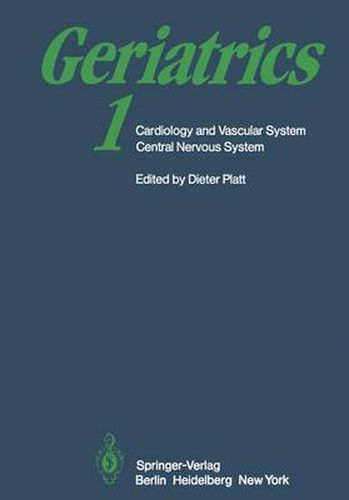Readings Newsletter
Become a Readings Member to make your shopping experience even easier.
Sign in or sign up for free!
You’re not far away from qualifying for FREE standard shipping within Australia
You’ve qualified for FREE standard shipping within Australia
The cart is loading…






This title is printed to order. This book may have been self-published. If so, we cannot guarantee the quality of the content. In the main most books will have gone through the editing process however some may not. We therefore suggest that you be aware of this before ordering this book. If in doubt check either the author or publisher’s details as we are unable to accept any returns unless they are faulty. Please contact us if you have any questions.
In 1909 a short contribution entitled Geriatrics was published in the New York Medical Journal. According to this article, old age represents a distinct period oflife in which the physiologic changes caused by aging are accompanied by an increasing number of pathologic changes. We now know that the organs of the body age neither at the same rate nor to the same extent and that physiologic alterations are indeed superimposed by pathologic changes; as a result of the latter phenomenon the origins and course of illnesses in the elderly can present unusual characteristics. The frequency of concurrent disorders in the elderly entails the danger of polypragmatic pharmacotherapy, i. e. , the use of various drugs to combat various disorders while neglecting the possibly adverse combined effects of these drugs. To obviate this danger, special knowledge in the field of geriatrics, the medical branch of gerontology, is necessary. Geriatrics is constantly increasing in importance owing to the near doubling of life expectancy over the past 130 years and to the improved diagnostic and therapeutic techniques made available by medical pro gress. The rapid recent development of experimental gerontology has played an essential role in enabling us to understand the special features of geriatrics. This progress has, however, been accompanied by such a vast increase in the volume of literature on the subject that specialists in the field can scarcely maintain an overall perspective of new publications.
$9.00 standard shipping within Australia
FREE standard shipping within Australia for orders over $100.00
Express & International shipping calculated at checkout
This title is printed to order. This book may have been self-published. If so, we cannot guarantee the quality of the content. In the main most books will have gone through the editing process however some may not. We therefore suggest that you be aware of this before ordering this book. If in doubt check either the author or publisher’s details as we are unable to accept any returns unless they are faulty. Please contact us if you have any questions.
In 1909 a short contribution entitled Geriatrics was published in the New York Medical Journal. According to this article, old age represents a distinct period oflife in which the physiologic changes caused by aging are accompanied by an increasing number of pathologic changes. We now know that the organs of the body age neither at the same rate nor to the same extent and that physiologic alterations are indeed superimposed by pathologic changes; as a result of the latter phenomenon the origins and course of illnesses in the elderly can present unusual characteristics. The frequency of concurrent disorders in the elderly entails the danger of polypragmatic pharmacotherapy, i. e. , the use of various drugs to combat various disorders while neglecting the possibly adverse combined effects of these drugs. To obviate this danger, special knowledge in the field of geriatrics, the medical branch of gerontology, is necessary. Geriatrics is constantly increasing in importance owing to the near doubling of life expectancy over the past 130 years and to the improved diagnostic and therapeutic techniques made available by medical pro gress. The rapid recent development of experimental gerontology has played an essential role in enabling us to understand the special features of geriatrics. This progress has, however, been accompanied by such a vast increase in the volume of literature on the subject that specialists in the field can scarcely maintain an overall perspective of new publications.